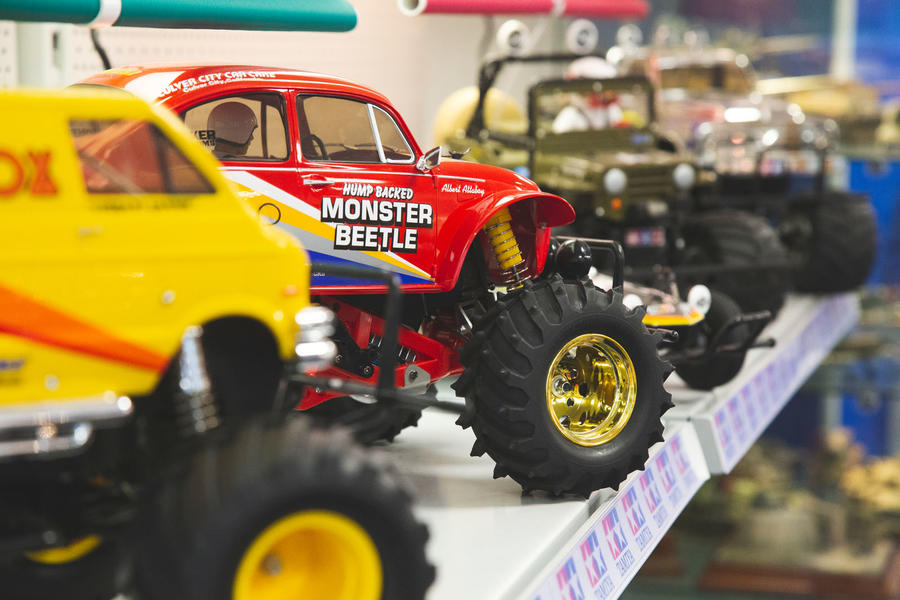Tamiya was the first company to make radio-controlled models that were easy to assemble but a world away from being simplistic. For countless thousands it ignited an enduring love of cars and machines and sparked a worldwide cult following.
Since the 1960s, Tamiya has made its name through the quality of its static plastic and radio control (R/C) scale kits and, most of all, the ingenuity that goes into their design and the detail in them. The R/C cars and buggies that so many grew up with have intricate chassis and drivelines, with wishbone suspension, dampers, differentials and interchangeable gear ratios (a bit) like the real thing. Driving takes real skill: there’s nothing quite like flinging an R/C buggy around a tight course to sharpen up the reflexes.

Two of the latest Tamiya R/C releases are the Mercedes-Benz G500 and the Toyota Supra. The G500 is based on a new CC-02 chassis – the ‘CC’ stands for ‘cross-country’ – with a ladder chassis construction rather than a simple tub, and the complex suspension and driveline gives the same kind of axle articulation as the full-blown Merc. That makes it ideal for rock-crawling competitions, as does the choice of 20 gear ratios for the single-speed gearbox.
Read more: Road-legal Tamiya Wild One buggy - full details
The Supra is based on Tamiya’s road-going TT02 chassis and was launched at the same time as the real thing. Such is the trust and respect companies have for the Tamiya brand, the model company was allowed access to Toyota’s classified design and CAD information long before the Supra was revealed.
Both are a far cry from Tamiya’s early days. Once a timber company, it started making crude wooden model kits after the war. Budding modellers could whittle them into shape with a freshly sharpened penknife, but it took plenty of determination to make a decent job of it. One such youngster was Shunsaku Tamiya, son of Tamiya founder Yoshio Tamiya.








































Join the debate
Add your comment
Lunchbox
Weve had great fun with the Lunchbox vans!
Still got my 80s Sand Rover
Great article. I knew there was a reason I kept checking in on the Autocar website, I don’t really do modern econo box’s.
Currently planning to build a tribute to the monster beetle but using a real “New” Beetle.
Still got my 80s Sand Rover
Great article. I knew there was a reason I kept checking in on the Autocar website, I don’t really do modern econo box’s.
Currently planning to build a tribute to the monster beetle but using a real “New” Beetle.